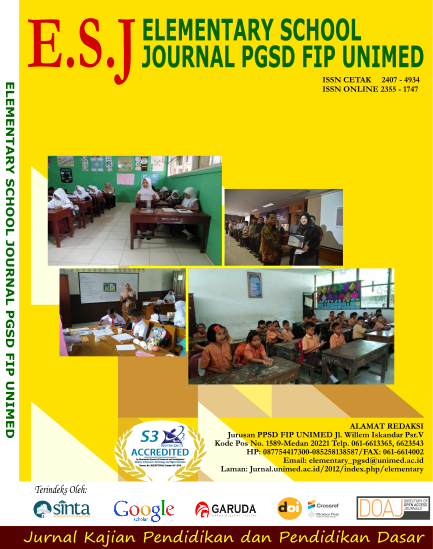GEOMETRY LEARNING WITH INDONESIAN REALISTIC MATHEMATICS EDUCATION APPROACH
DOI:
https://doi.org/10.24114/esjpgsd.v11i4.33331Abstract
This research is based on the learning background that is still a teacher-centered dynamic while students are passive. The purpose of this research is to develop a teacher™s guideline in learning geometry with the Indonesian Realistic Mathematics Education (PMRI) approach that is valid, practical, and influential. This research is a development research (R&D) with the Tjeerd Plomp model. Field trial with an experimental design of one group pre-test and post-test time series, with a sample of 33 elementary school students in the city of Padang. The results showed that the PMRI teacher guidelines were valid, practical, and influential. In particular, there are significant differences in the geometry learning outcomes between before and after using this teacher guide. This is indicated by the results of the data analysis of the significant difference between post-test 1 and pre-test 1, post-test 2 and pre-test 2, as well as post-test 3 and pre-test 3 with a p-value of 0.001 < 0.05. Qualitatively, students can understand that a square is a rectangle whose all sides are the same length, and that a square and a rectangle had the characteristics of a parallelogram. In term of van Hiele's theory, students are at the stage of informal deductive thinking. Students can conclude the shapes and characteristics of flat shapes of triangles, squares, rectangles, and parallelograms. Elementary school teachers are advised in learning geometry to use the teacher™s guidelines that have been developed.Keywords: Learning, geometry, PMRI, van Hiele, primary school.Downloads
Published
2022-01-10
Issue
Section
Articles
License
Copyright (c) 2022 Syafri - Ahmad

This work is licensed under a Creative Commons Attribution 4.0 International License.

Elementary School Journal PGSD FIP UNIMED is licensed under a Creative Commons Attribution 4.0 International License.
ESJ : Elementary School Journal PGSD FIP UNIMED by PGSD Universitas Negeri Medan. p-ISSN : 2407-4934 | e-ISSN : 2355-1747

